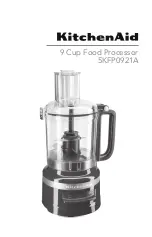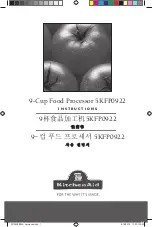
4.3 - ELECTRICAL DRAWING OF THE VEGETABLE CUTTER T.M.
Fig. n°21 - Drawing of 230/400 Volt threephase electrical
18
Fig. n°21-A - Drawing of 220 Volt monophase electrical installation
1.2.2 - COSTRUCTION PARTICULARS (Materials used)
The
TM
Vegetable cutter is built adopting material highly resistant to
mechanical wear and tear, structural shock, and the corrosive agents
normally found within the products to be processed.
Particularly:
-
The processing hopper and base are in anodized alluminium, which
besides its high oxidation resistence, also guarantees hygienic contact
with food and the non-adherence of acid and salts.
-
The structure, cover, press lifter, disc carrying shaft in AISI 304 o 430.
-
Pestle, press, receiving tray, and control box in highly resistant plastic,
sutable for contact with food.
-
The discs for processing the product are:
a) The DF, DQ and PS series have an alluminium supporting structure and
knives in AISI 420 steel.
b) The DT series have a plastic structure and knives in AISI 420 steel.
1.3 - SAFETY
1.3.1 - GENERAL SAFETY
The T.M. Vegetable cutter described in this manual adheres, as far as
mechanical, electrical and hygienic safety are concerned, to the
specifications laid down in:
MECHANICAL SAFETY
:
98/37.
ELECTRICAL SAFETY
:
73/23/CEE; 89/336/CEE.
HYGIENIC SAFETY
: 89/109/CEE.
SPECIFICATIONS
: EN 60335-1; EN 55014.
** The Vegetable cutter is endowed with specified measures for electrical
and mechanical protection in the processing phase as well as the cleaning
and maintenance phases. There is, however, a
RISK FACTOR
(
CEE 98/37
Point 1.7.2
) that may not be entirely eliminated, in this manual recalled in
form of
ATTENTION.
This regards the danger of being cut derived from the manipulation of the
discs during their replacement and/or cleaning.
1.3.2 - ELECTRICAL SAFETY
The T.M. Vegetable cutter is endowed with sensor:
A on the press lever, able to block the functioning of the machine should
the lever be lifted beyond the block point of the lid and allows for the
automatic start
at the moment the abovementioned dangerous
conditions are eliminated
(Fig. n°2).
7






























